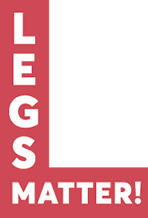This was originally supposed to be a blog about the Commissioning for Quality and Innovation (CQUIN) framework but times have changed. We are now facing the biggest health challenge most of us have ever known.
Covid-19 presents interesting times for those of us involved in wound care. As a former district nurse and tissue viability nurse, my first instinct was to try to find out how I could offer some clinical hours to my local community nursing service. However, when I thought about it, I realised a more strategic approach might be more helpful.
“We realised we might be more useful developing some resources to support shared care and self-care, than rushing out to do some leg ulcer dressings”
Wound care is estimated to take up around 50% of community nursing time and more and more people seeking wound care are presenting in general practice, care homes, walk-in centres and accident and emergency departments.
Speaking with colleagues involved in the National Wound Care Strategy Programme (NWCSP), we realised we might be more useful developing some resources to support shared care and self-care, than rushing out to do some leg ulcer dressings.
Self-care should reduce the risk of infection for patients, carers and health professionals and reduce pressure on healthcare services that are being stretched beyond capacity.
In the last few weeks, our small team of tissue viability clinicians who cannot be re-deployed to clinical areas, patients and carers, has drawn up guidance on a number of topics. This guidance can be found on the NWCSP website and is intended as example documents for healthcare organisations to use or adapt.
We have also posted links to some existing helpful resources such as videos showing dressing changes and application of various compression systems. The website also signposts to existing good quality resources such as the React to Red site, Legs Matter site and the Lindsay Leg Club leaflets for people with leg ulcers.
We are also developing materials for health professionals, including guidance on preventing skin damage from PPE. We will continue to develop such resources and suggestions can be made by emailing NatWoundStrat@yhahsn.com
It makes sense to encourage patients and their carers to learn how to look after their own wounds and prevent pressure damage. It is tempting to imagine that all we need to do during the Covid 19 crisis is make sure wounds are covered by a dressing, but for people with a leg wound, this approach would increase patient suffering, increase the risk of infection and lead to increased exudate. Self-care would become more challenging, so demand on our healthcare services would increase.
Where possible, people with a leg wound and an adequate arterial supply should be offered compression therapy. If an ABPI is not possible, providing there are no ‘red flag’ symptoms, first line mild graduated compression should be offered (see the NWCSP Lower Limb Recommendations) and leg elevation encouraged.
“We are embracing technology both to access information and through telemedicine for consultations”
For patients in full compression, options that promote self-care such as compression hosiery or wraps should be explored.
At some point the Covid-19 situation will ease and when we look back there will be some positives. Already, health professionals, patients and carers are more open to the idea of self -care and shared care.
We are embracing technology both to access information and through telemedicine for consultations. Through necessity, we will have learned how to make the best use of our limited resources, reduce waste and remove unnecessary complexity from our systems.
We will have been forced to take more risks than is normal and some of these will prove to be less risky than we thought and may even deliver benefits.
And for those who are wondering about the CQUIN, we have been advised that the CQUIN will be suspended for the period from April to July 2020, so at present, providers need not take action to implement CQUIN requirements, nor carry out CQUIN audits or submit CQUIN performance data.
More information can be found on the NHS Futures site, which can be accessed through a request to NatWoundStrat@yhahsn.com
Una Adderley is director, National Wound Care Strategy Programme

This content was taken from the Nursing Times website, click here to see the original article









